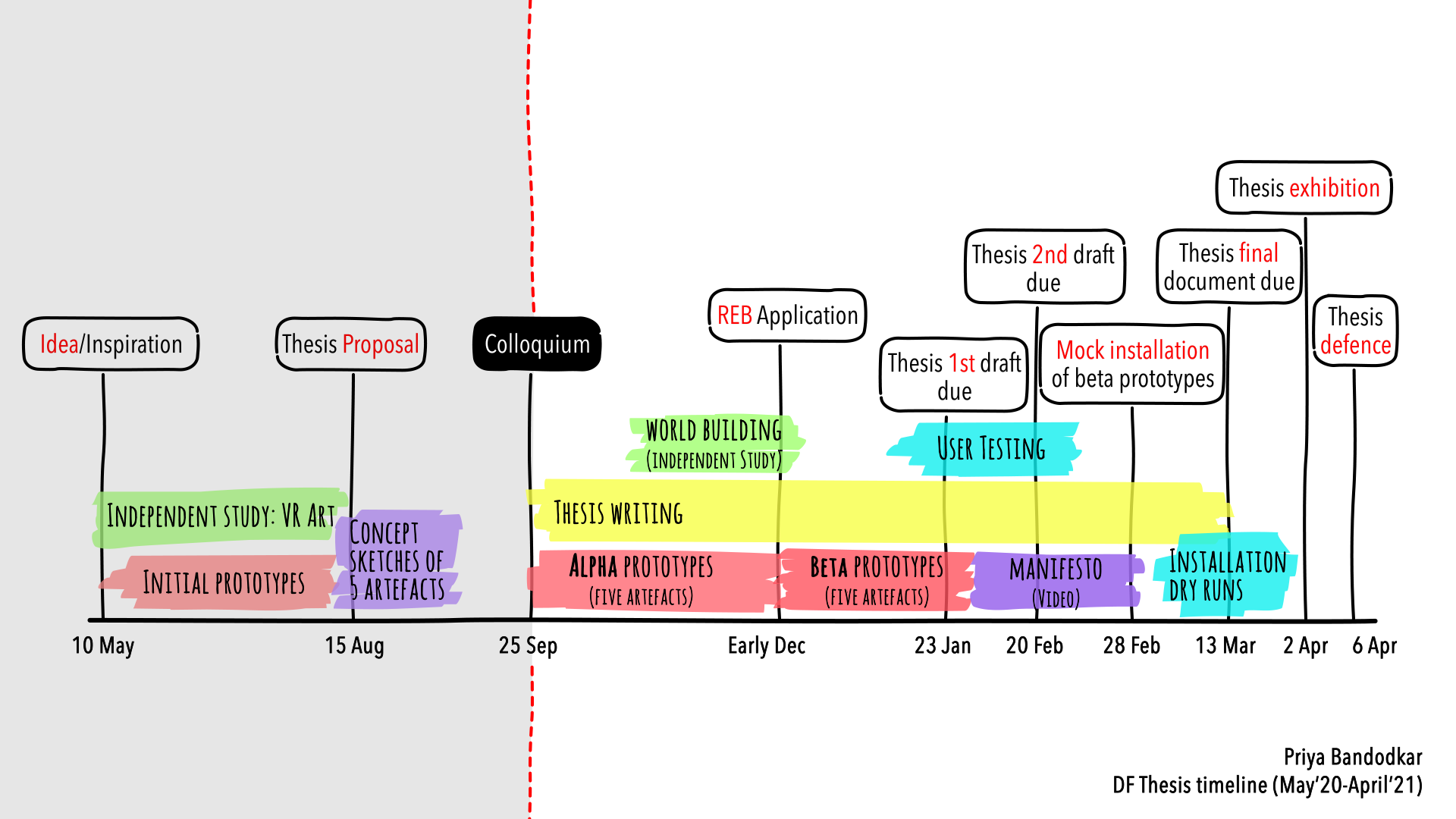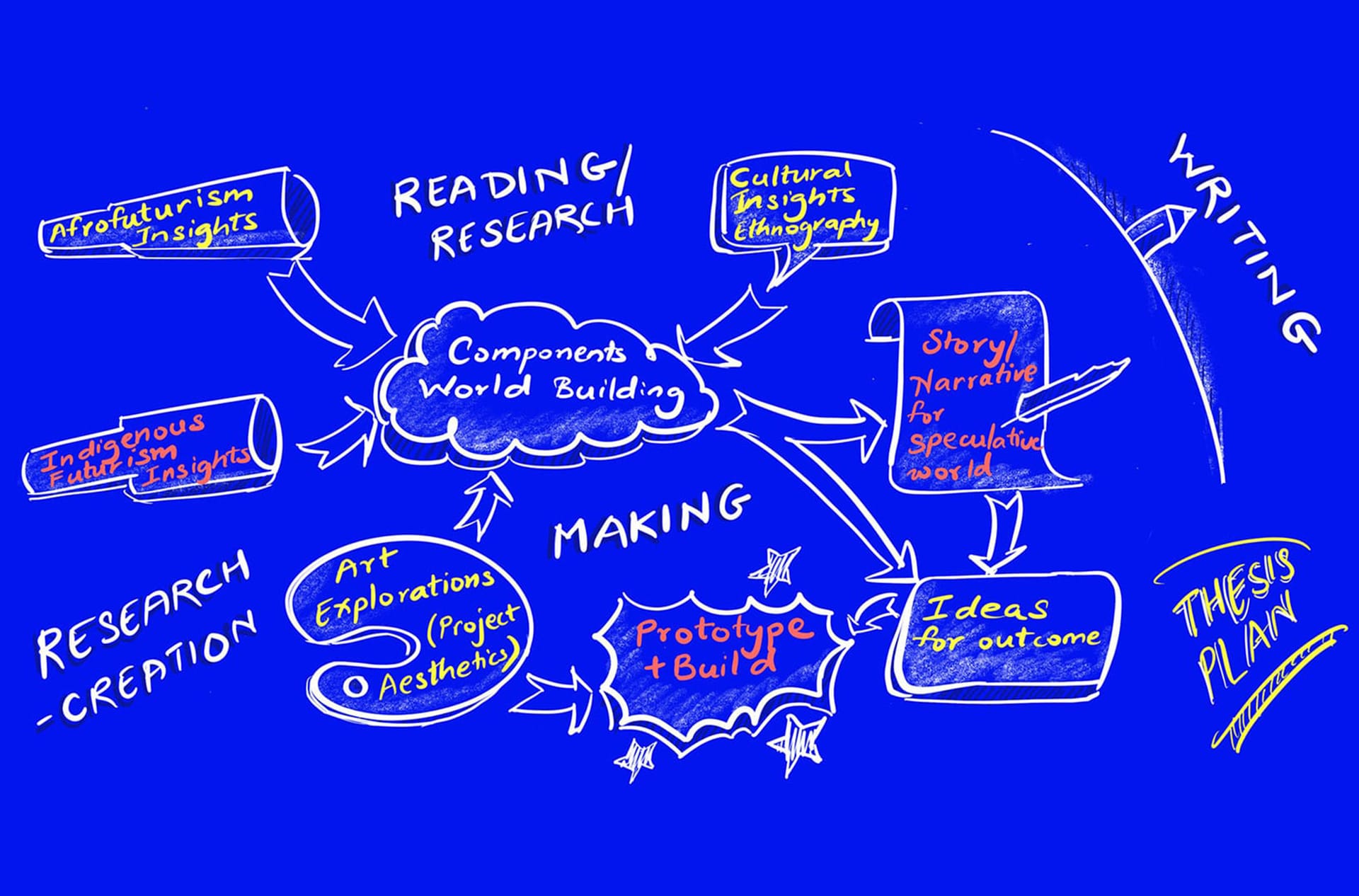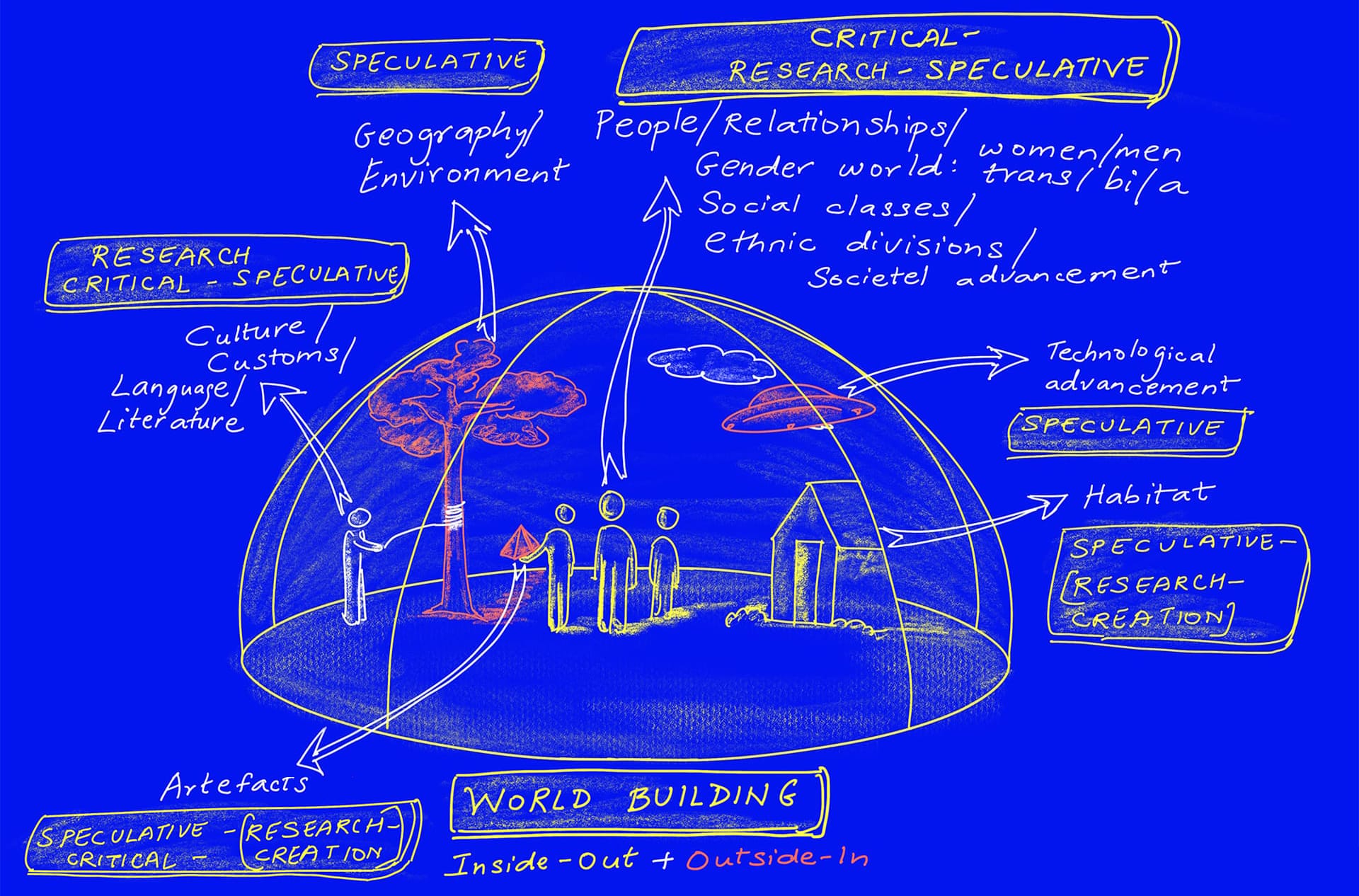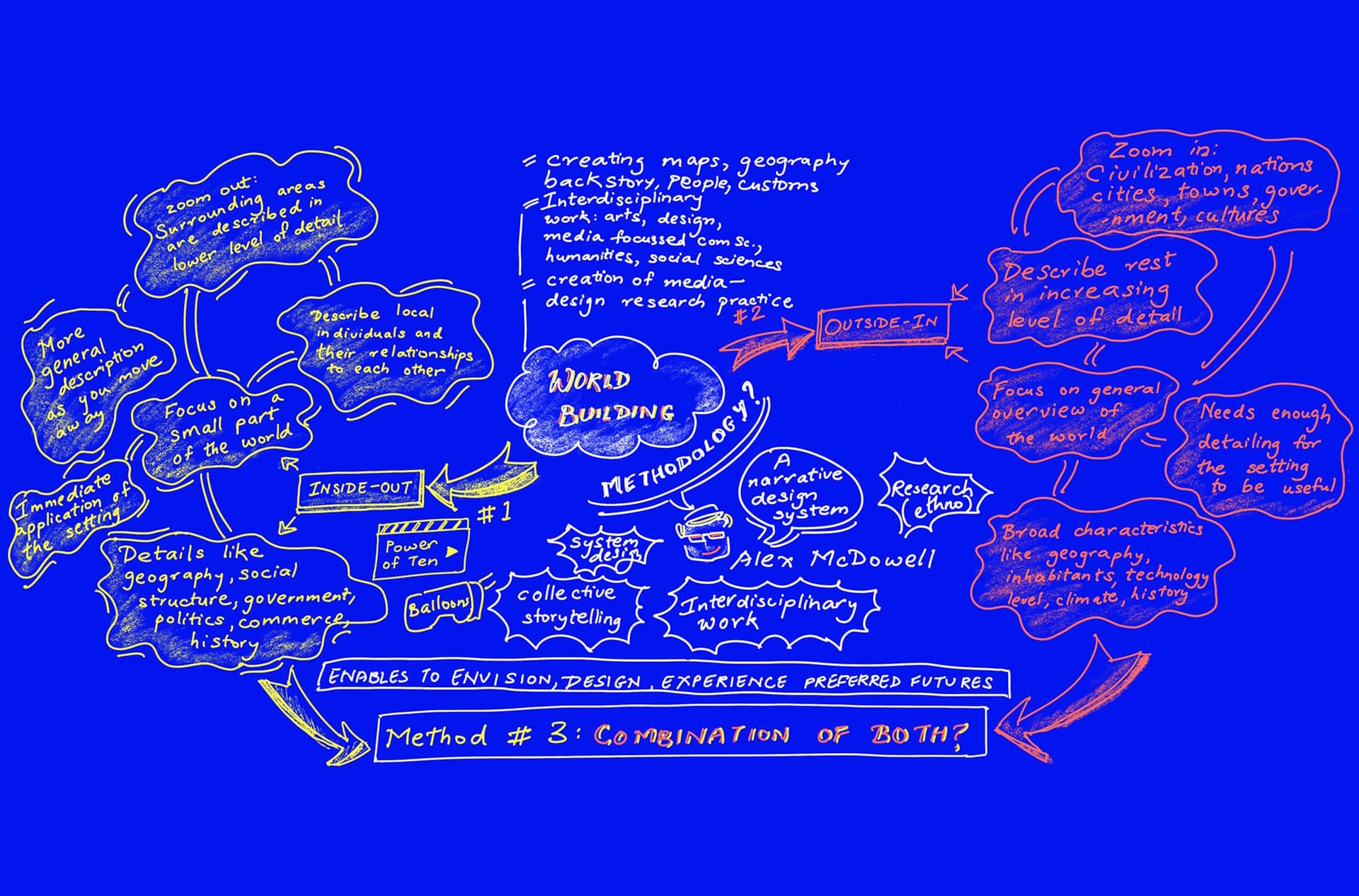Purpose Statement
The purpose of this project was to extract and apply design processes to create a framework in order to expand the discourse of Indofuturism in a contemporary context.
Ethnographic Scope
- People of the contemporary Indian diaspora
- Youth of Indian descent (18+ years)
- Under-represented Indian communities
Problem Statements
How might design methods be applied to create experiences that help advance the understanding of concepts of Indofuturism in the youth of Indian descent and contemporary Indian audiences?
How might design methods be applied to revitalise Indian cultural references through these experiences?
How could this be envisioned as a framework that other creators could adapt?
My Role
As the primary researcher and designer, I led the design process, creative direction, production, development, and managed the project.
Duration
10 months
Tools
Adobe XD, ProCreate, Adobe Photoshop, Adobe Illustrator, Autodesk Maya, DepthKit, Unity3D, Processing, p5JS, MS Word, MS PowerPoint
Discovery
Environmental Scan
This stage involved analysing the existing landscape of established discourses that emerged in the realm of speculative futurism. The first step was researching the histories of these communities and finding experiences that might overlap with those of other Indian diasporas. The next step was considering the concepts that were used to address or reimagine these past experiences, and in turn reorient the present.
Ethnographic Study
This involved conducting an ethnographic study of potential users to arrive at topics relevant to their experiences through research and interviews, that would serve as case studies in developing the framework for Indofuturism.
Context Review
The context review involved studying the work of other creators in this area, especially the ones using methods and techniques beyond traditional media to reach out to the youth and contemporary audiences.
Mindmapping
This helped visualise related topics and ideas and draw relationships between them.
Findings
A series of five artefacts
The project necessitated consideration of a wide range of case studies to analyse the efficacy of the framework. Instead of developing a singular case study or concept, a series of five pieces was envisioned, creating multiple avenues of engagement with the work. These five case studies–or ‘artefacts’–were to be explored, each employing distinct methodologies and technologies.
Use of contemporary digital media technology
Since the focus of this project was to engage with youth, contemporary digital media technologies, as opposed to conventional media, were to be used to deploy the output.
Building the artefacts as interactive experiences
The artefacts were to be designed as interactive experiences, so users would be able to actively, rather than passively, engage with them.
Speculative Design as a methodology
One of the insights that emerged from the environmental scan was the use of speculative design approaches involving unconventional crafting techniques–such as fictional worlds, cautionary tales, what-if scenarios, and thought experiments–to address difficult topics, as indicated by the ethnographic study. Instead of calling direct attention (which might have incited rejection instead of acceptance, due to the levels of sensitivity people associate with these topics), speculative future design as a methodology would help create a safer space for users to interact with the artefacts. It would also create an opportunity reimagine lost cultural heritages in a speculative future and reincarnate them in a contemporary setting.
Linking the artefacts in a storyworld
Although the artefacts explored distinct concepts, it would be crucial to bring them together thematically. This was to be achieved by embedding them in a storyworld narrative applying principles of World Building, and was to be presented as a transmedia storytelling video.
Design Sprints and Iterative Design as methods
Design Sprints would be necessary to translate and test conceptual thoughts as designs. It would help in visualising ideas as actionable design directions for each of the artefacts. The designs were to be further built as prototypes (alpha, beta and gold) using Iterative Design.
Methodologies
- Speculative Design
- Critical Design
- Dark Design
Methods
- Thought Experiments
- Iterative Design
Conceptual Framework
- World Building
Design and Development
Each of the five artefacts were created in design sprints that involved concept sketching, concept development, wireframing, and iterative prototyping.
Concept Sketching
This involved ideating on concepts for each of the five artefacts in the form of sketches and research documented in the process journal.
Note that many of these concepts are satirical in nature because of application of Critical and Dark Design methodologies.
Concept Development
In this step, moodboards and creative direction for each of the five artefacts was explored.
Wireframing
This step involved documenting the user journey and understanding the UX needs of each of the five artefacts.
Prototyping
This stage involved the development of working prototypes for each of the five artefacts.
Learn more about each artefact below.
Analysis
User Testing
User testing was conducted ethically, under the oversight of the Research Ethics Board, to gather usage and usability data on each artefact as well as understand the emotional reaction that users of the target diaspora had when interacting with each artefact. The study consisted of focused one-on-one sessions with individual candidates including interviews for qualitative data. Users were asked to fill out a short questionnaire about the user experience after the study for a quantitative analysis.
The user testing questionnaire is available here.
Retrospection
The user testing led to a series of rich discussions. In spite of these sessions being remote, the energy and enthusiasm of the participants was strong. Situating the artefacts in the context of a speculative future helped participants to safely engage with difficult issues and provide insights from their personal experiences. The vivid perspectives that emerged from this study helped to further unearth aspects of the project and and an increased understanding on the subjects covered in the prototypes. The study helped add more voices and gave a glimpse of the potential conversations that Indofuturism can inspire.
Outcomes
Google Analytics
Activating Indofuturism has been the #1 result in average search results for “indofuturism”, “indo futurism” (Google Search console). Google Search Analytics are indicating a rising global interest in my research.
Interviews
I was interviewed on a podcast by XRDI (Extended Reality Developers of India) in 2021.
A key performance indicator for me personally was creating avenue for discussion with people from different disciplines. I met with a PhD researcher in Environmental Humanities from Indian Institute of Technology, India and have been contacted by the India Future Society (IFS).
Publications
The research is going to be featured in a publication as a part of the EyeMyth Festival in India in 2022.
Appendix
Design Process

Project Timeline

















